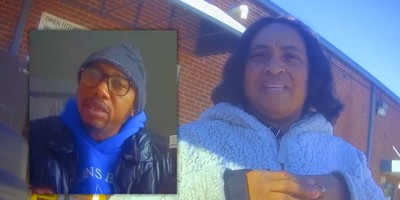Look, we usually torch The New York Times for a variety of reasons, but David Leonhardt has not been one to peddle panic porn about the virus, especially when it comes to Omicron. He aptly noted that this variant is no different than any other pathogen we face yearly with regards to risk. Hospitalizations aren’t as high, and the cases are mild. Those trends continue, with the article clearly stating that Omicron is “in retreat” (via NYT) [emphasis mine]:
The latest Omicron developments are encouraging:
— David Leonhardt (@DLeonhardt) January 19, 2022
1. New cases are plummeting in a growing list of places.
2. The % of cases causing severe illness is much lower than with Delta.
3. Vaccines remain extremely effective in preventing bad illness.
??https://t.co/JCEswOkeFX
If anything, the official Covid numbers probably understate the actual declines, because test results are often a few days behind reality. @kinsa, a company that tracks 2.5 million internet-connected thermometers across the country, shows fevers falling: pic.twitter.com/L7k2KGNHh2
— David Leonhardt (@DLeonhardt) January 19, 2022
The U.S. seems to be following a similar Omicron pattern as South Africa, Britain and several other countries: A rapid, enormous surge for about a month, followed by a rapid decline — first in cases, then hospitalizations and finally deaths.
— David Leonhardt (@DLeonhardt) January 19, 2022
Since early last week, new cases in Connecticut, Maryland, New Jersey and New York have fallen by more than 30 percent. They’re down by more than 10 percent in Colorado, Florida, Georgia, Massachusetts and Pennsylvania. In California, cases may have peaked.
[…]
The following data comes from Kinsa, a San Francisco company that tracks 2.5 million internet-connected thermometers across the country. It uses that data to estimate the percentage of Americans who have a fever every day. The declines over the past week have been sharp, which is a sign of Omicron’s retreat
[…]
Many hospitals are still coping with a crushing number of patients, because Covid hospitalization trends often trail case trends by about a week. But even the hospital data shows glimmers of good news: The number of people hospitalized with Covid has begun declining over the past few days in places where Omicron arrived…
[…]
Some of the clearest research on Covid’s risks comes from a team of British researchers led by Dr. Julia Hippisley-Cox of the University of Oxford. The team has created an online calculator that allows you to enter a person’s age, vaccination status, height and weight, as well as major Covid risk factors. (It’s based on an analysis of British patients, but its conclusions are relevant elsewhere.)
A typical 65-year-old American woman — to take one example — is five foot three inches tall and weighs 166 pounds. If she had been vaccinated and did not have a major Covid risk factor, like an organ transplant, her chance of dying after contracting Covid would be 1 in 872, according to the calculator. For a typical 65-year-old man, the risk would be 1 in 434.
Among 75-year-olds, the risk would be 1 in 264 for a typical woman and 1 in 133 for a typical man.
Those are meaningful risks. But they are not larger than many other risks older people face. In the 2019-20 flu season, about 1 out of every 138 Americans 65 and older who had flu symptoms died from them, according to the C.D.C.
And Omicron probably presents less risk than the British calculator suggests, because it uses data through the first half of 2021, when the dominant version of Covid was more severe than Omicron appears to be. One sign of Omicron’s relative mildness: Among vaccinated people in Utah (a state that publishes detailed data), the percentage of cases leading to hospitalization has been only about half as high in recent weeks as it was last summer.
[…]
Omicron appears to be in retreat, even if the official national data doesn’t yet reflect that reality. Omicron also appears to be mild in a vast majority of cases, especially for the vaccinated. This combination means that the U.S. may be only a few weeks away from the most encouraging Covid situation since early last summer, before the Delta variant emerged.
If that happens — and there is no guarantee it will, as Katherine Wu of The Atlantic explains — it will be time to ask how society can move back toward normalcy and reduce the harsh toll that pandemic isolation has inflicted, particularly on children and disproportionately on low-income children.
Recommended
NEW: Study on severity of those infected with the #OmicronVariant compared to the #DeltaVariant:
— Rochelle Walensky, MD, MPH (@CDCDirector) January 12, 2022
??53% less risk of symptomatic hospitalization
??74% less risk of ICU admission
??91% less risk of death
0?Omicron patients required mechanical ventilation
https://t.co/to2swFYF5Q pic.twitter.com/LZYf0t3CGY
The piece did deal with the grim statistic which is that we’re seeing around 2,000 deaths a day and overwhelmed hospitals. Look, no doubt some hospitals are seeing spikes in COVID patients though the system is not on the verge of collapse which is what is always peddled by the panic porn makers every time there’s a new variant. The risk assessment with Omicron is what’s ley here along with the metrics that this virus is on the downturn. It’s time to start thinking about the future with COVID. It’s here to stay. It’s endemic and the risks are not a whole lot different than the flu. Will this be the last freakout? Probably not—the Left is addicted to the hysterics over this virus.
























Join the conversation as a VIP Member